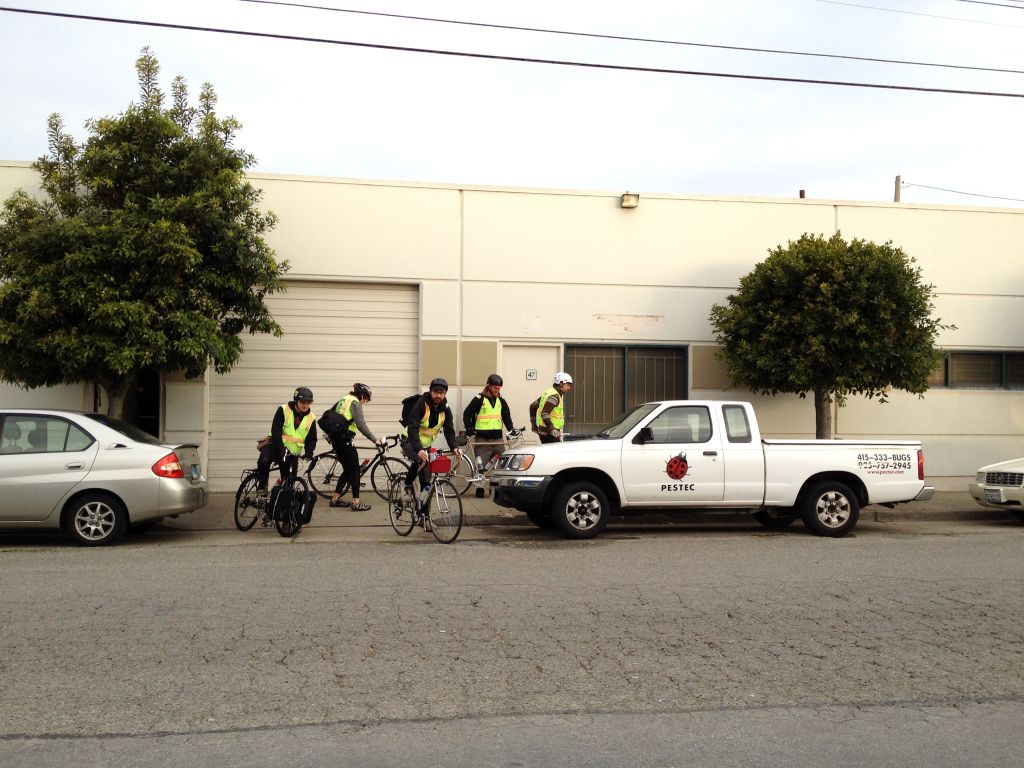Mosquito Abatement Season Reaches Successful Finish

By Howard Williams
As badly needed rain fell, San Francisco’s 9th mosquito abatement season ended on October 31, 2014 when Pestec’s Mosquito Abatement Courier (MAC) crew completed our duties across the City.
As in previous years, our season coincided with baseball season. The MAC team began training in February while baseball teams were beginning their spring training. And we concluded our season just as the San Francisco Giants were parading through our city in celebration of their third World Series title in five seasons.
Like the Giants, the MAC team also had a successful season. The season once more concluded without any reported cases of West Nile Virus (WNV) or any other mosquito borne diseases in San Francisco. Since the Pestec MAC team began operations in 2006, there has been only one reported case of a person being infected by WNV in San Francisco. That was a non-fatal case in 2012. Last year, a San Franciscan was infected but probably while in another Bay Area county.
The continuing success in San Francisco’s WNV Integrated Pest Management (IPM) is a reflection of the national progress in WNV prevention since the disease’s nationwide resurgence two years ago. Unfortunately, while the rest of the Bay Area and California have seen a continuing increase in the disease. After a 2013 decrease in California WNV cases and deaths from the 2012 resurgence, cases and deaths in the state have significantly increased this year. The national Center for Disease Control reported that as of October 28, California has had 608 WNV cases which have resulted in 17 deaths. This exceeds all of the state’s 2013 totals (379 cases of which 15 were fatal). Surprisingly, the three year drought that has afflicted California may be partly to blame (1).
Contrary to many people’s intuition, the drought has not decreased the WNV threat to California. Mosquitoes need water to lay their eggs and to sustain their larvae yet California continues to suffer an increase in WNV cases. There are two possible explanations for this. One is that as lakes and reservoirs recede and rivers and creeks run dry, birds (which harbor WNV) concentrate in the remaining water sources where they are bitten by mosquitoes. Also, remaining water sources tend to become more stagnant and fill with organic matter. So these remaining sources become more habitable for mosquitoes. Whatever the reasons, the drought has not stopped – and may have abetted – the WNV resurgence in California (2).
A cause for future concern is the approach of the invasive Asian tiger mosquito species (Aedes albopictus). A beneficiary of the global economy, the Asian tiger mosquito – so named for the stripes on its abdomen – has expanded from its native East Asia to Africa, southern Europe and the eastern United States. The Asian tiger is especially dangerous for many reasons. It can spread over 30 diseases, including West Nile Virus and other forms of encephalitis. It is an aggressive biter and reproduces prolifically even in comparison with other mosquito species. And, unlike most other species, it is active throughout the day, not just at dawn or dusk. In 1985, the Asian tiger mosquito reached the USA when a shipment of used tires from Korea landed on the Houston waterfront. From there it has expanded all over the eastern USA. In this century it established itself in Southern California is now moving north. Given its adaptability – it can live in mountainous and temperate areas as well as tropical jungles – it is a matter of when – not if – they reach the Bay Area. (Note: not all striped mosquitoes are Asian tigers. A renewed mosquito trapping program can help determine when Asian tigers reach San Francisco and in how many numbers.) (3)
In addition to protecting San Francisco from mosquito borne diseases, the MAC crew also expanded knowledge of our city’s sewage system. At the beginning of the MAC season in February, the City government gave us maps listing over 23,000 catch basins (CBs also known as storm drains or sewer drains). By October, we had counted over 26,000 and identified the locations of those previously unknown CBs.
The storm that drenched the Bay Area with much needed rain cut the MAC season short by a few hours. We rode our bikes into Pestec headquarters in the Bayview-Hunters Point neighborhood and celebrated our success with our customary season ending pizza party. After that, we began our winter layoff or what the MAC team’s Old Veteran calls “our 106 day weekend.” See you after the “weekend.”